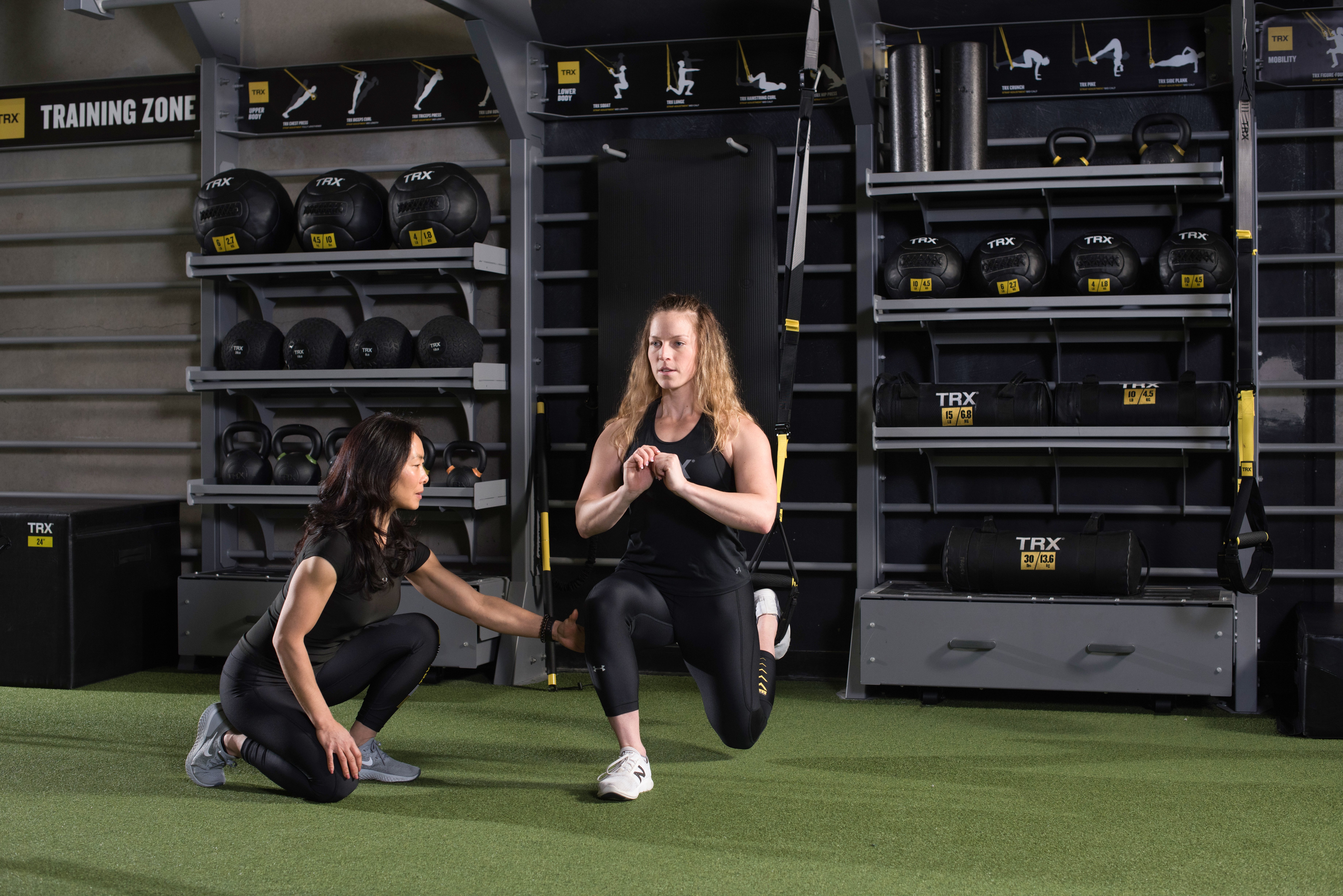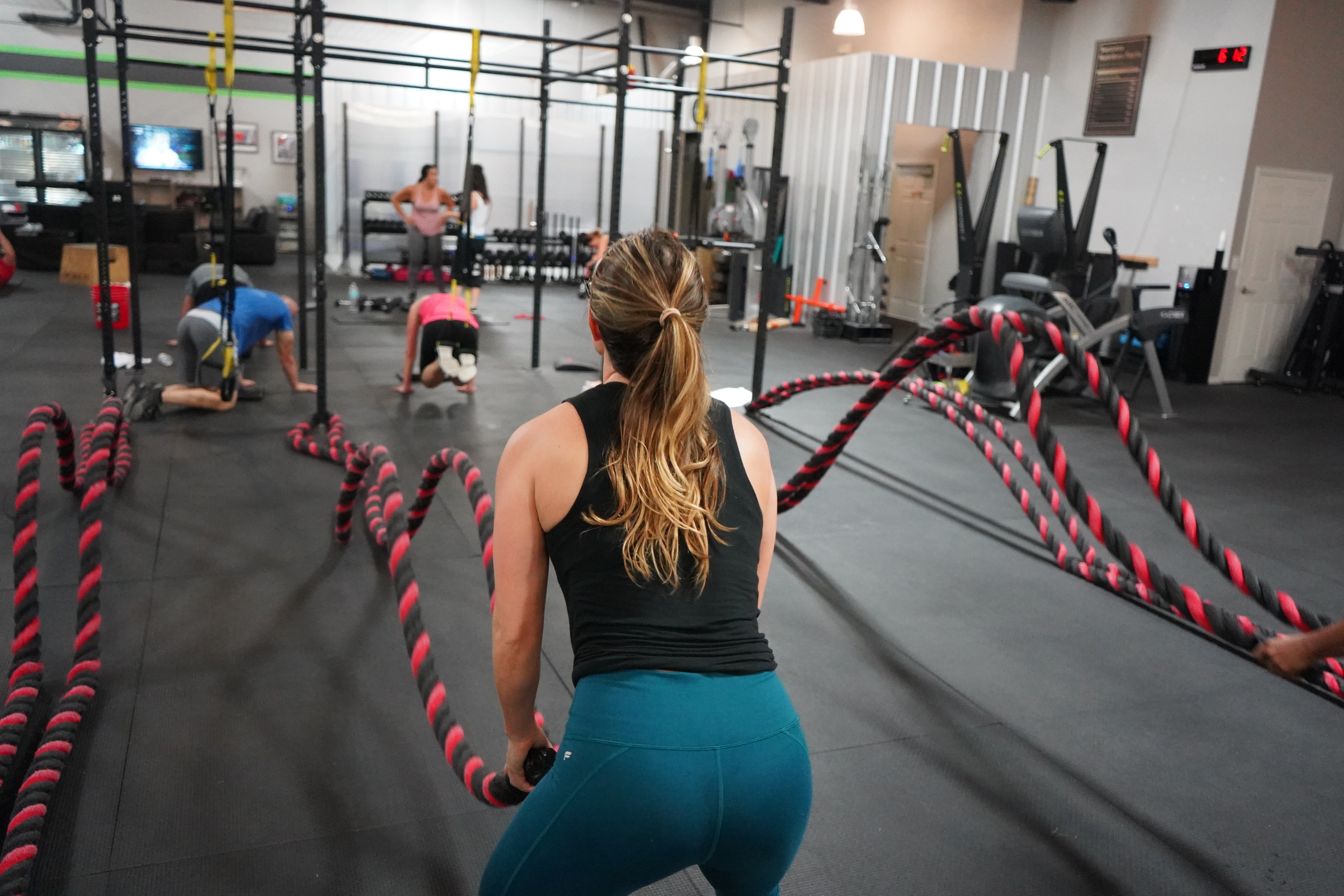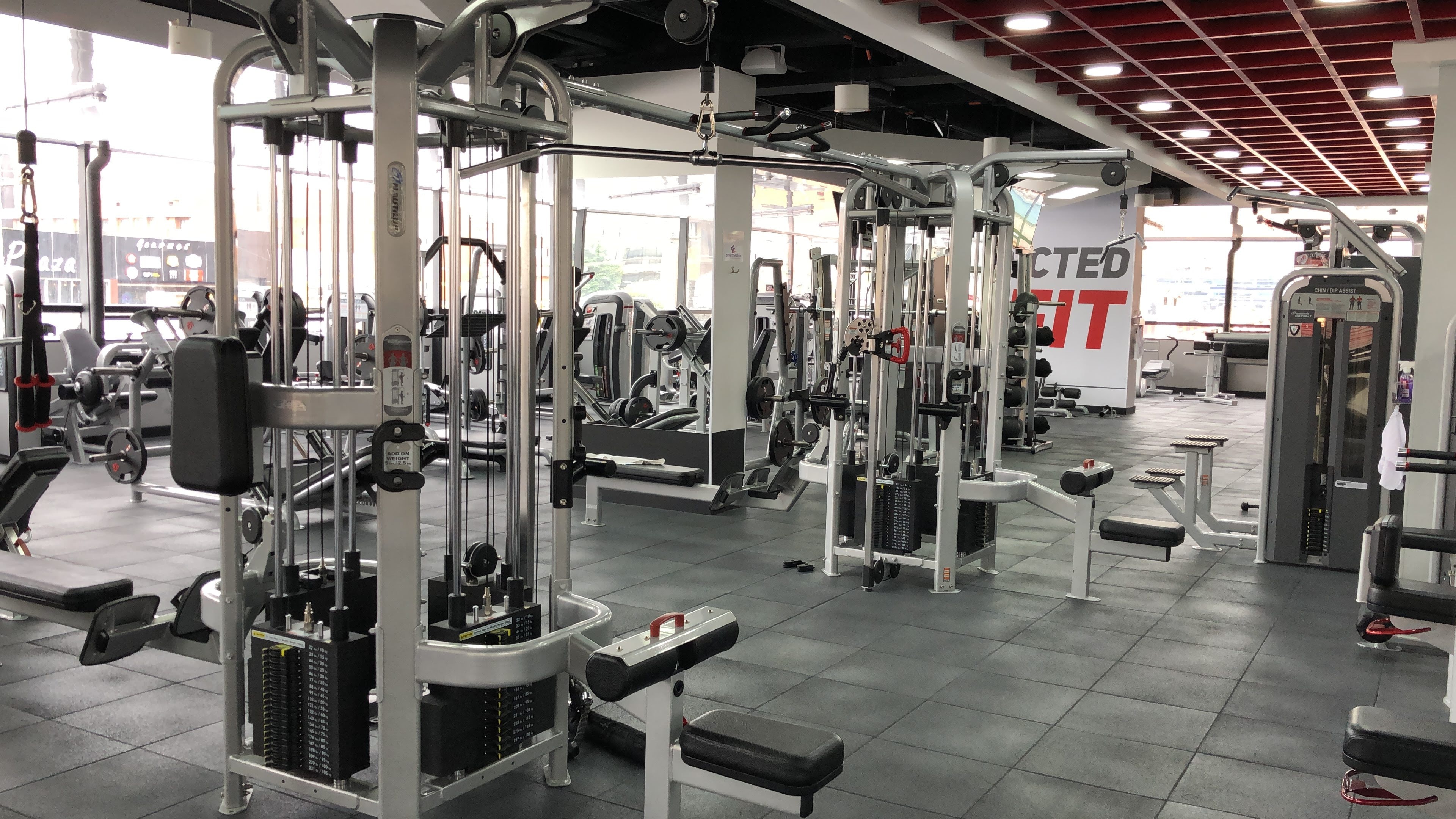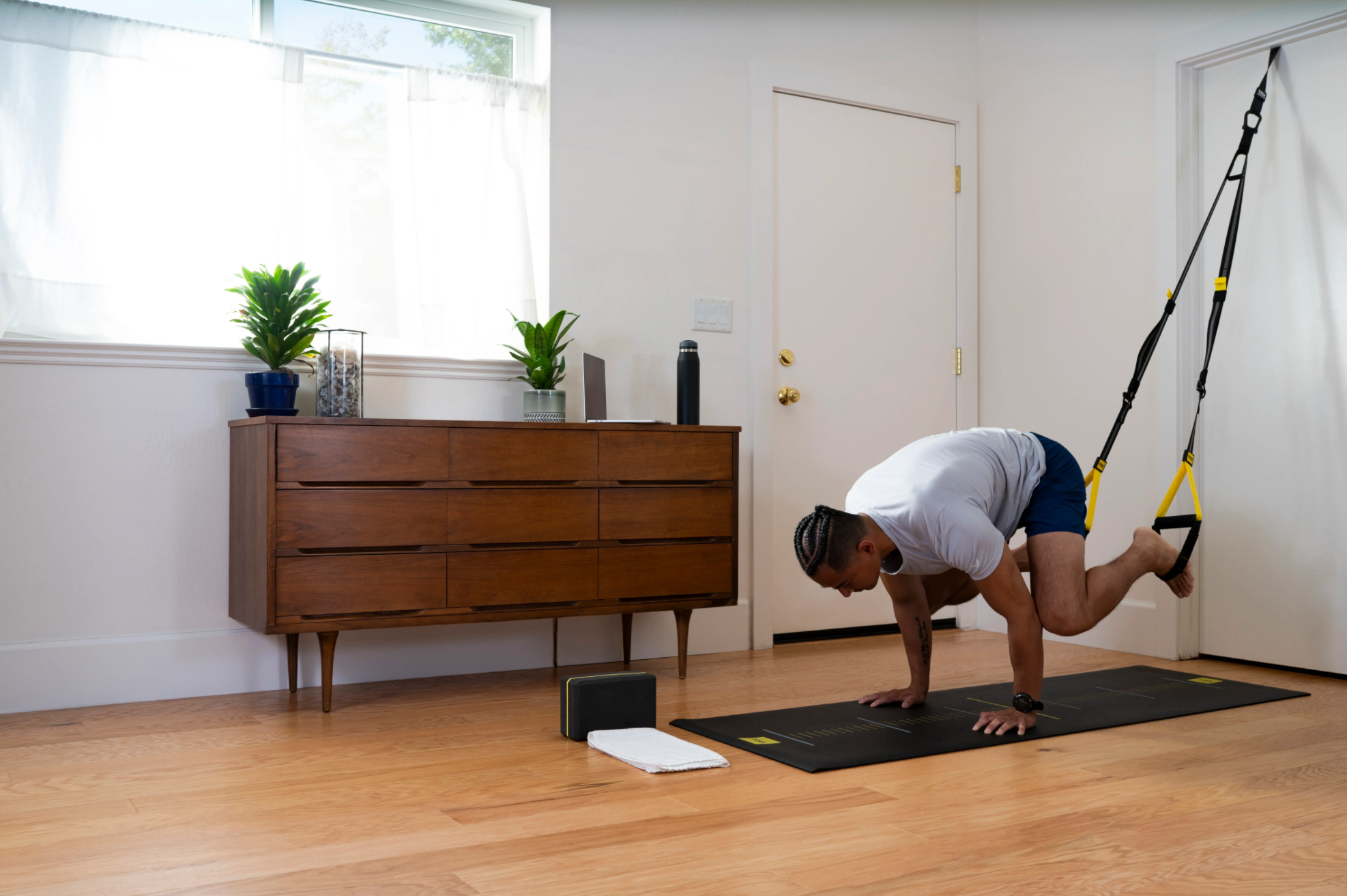Parents and teachers typically nudge students toward high-paying career fields. Lots of people may want to study music or art history, but—statistically—engineering is the more prudent choice. If you’ve ever considered a career in fitness, you’ve probably run similar calculations. Can you pay rent or a mortgage, support a family, or save for retirement on a personal trainer’s salary? The answer depends on where you live and how committed you are to developing your skills as a trainer.
Average personal trainer salary
According to the most recent estimates from Salary.com, the median personal trainer’s salary in the United States is $60,935; that number falls in a range that starts as low as $30,161 (for the bottom 10 percent) and runs as high as $87,551 (for the top 10 percent).
Big cities offer more money. In San Francisco, the median is $76,351, in New York, it’s $73,731, and in Houston, it’s $62,458. Smaller cities fall below the national median. In Missoula, Mont., the median salary is $50,363, in Bentonville, Ark. it’s $54,482, and in Morgantown, W. Va. it’s $59,655.
Keep in mind that the cost of living varies from city to city: according to NerdWallet’s cost of living calculator, $59,655 in Morgantown, W. Va. is like $130,601 in San Francisco. While the median-earning West Virginia personal trainer might make less than her San Francisco counterpart, she has more spending power.
Trainer compensation increases with both experience and additional education.
Test Before You Invest
To become a personal trainer, you need a personal trainer certification. There are dozens of certifying organizations, the key factor is to ensure you are gaining your credential from a NCCA or NOCA accredited program- Organizations vary by county, here in the United States three of the most popular are National Academy of Sports Medicine (NASM), American College of Sports Medicine (ACSM), and American Council on Exercise (ACE). Personal training certifications require a considerable amount of studying—trainers need a working knowledge of exercise science, kinesiology, anatomy, and physiology—and applicants must pass a test. Courses typically cost between $500 and $2000, depending on the accrediting group, hours and prepatory course requirements.
In addition to passing a written test—each certifying body has its own—you’ll need a CPR/AED certification, which you can usually get through your local Red Cross or YMCA. Once you’re certified as a personal trainer, you’ll renew your certifications every 1–3 years, depending on the certifying body. You’ll also need to complete continuing education courses to maintain your certification, of which can be obtained through a blend of conferences, live workshops/courses, and digital learning opportunities (TRX EDUCATION) .
If you’re uncertain about whether you want to commit the time and resources to pursuing a personal training career, you can always get a taste of the fitness professional life by getting qualified in an individual modality, like the TRX Suspension Training Course, indoor cycling, or Pilates, and teaching classes as a side gig.

Build a Client Roster
Earning your personal trainer certification is only the start of your fitness career. If you want to make money, you need clients!
One of the easiest ways to gain exposure to a new client base is through teaching group fitness classes. That doesn’t mean that you have to take on 20 classes a week—if you do, you’ll have little time left for personal training, which typically pays more than group classes. But group fitness can introduce potential clients to your coaching style and personality, and help you build a personal brand.
If group fitness doesn’t work for your schedule—or you feel self-conscious in front of groups—consider posting free tutorial videos on social media. Thousands of fitness pros use Instagram, Facebook, YouTube, and TikTok to help raise their profile.
 Photo by Inspired Horizons Digital Marketing on Unsplash
Photo by Inspired Horizons Digital Marketing on UnsplashPick a Location
There are a variety of facilities where trainers can work with clients. Some trainers work exclusively for national fitness chains like Equinox or Crunch, or regional chains like California’s In Shape. Others choose to work in gyms that specialize in one-on-one training and small group fitness, like Thrive in Atlanta. Trainers can even meet clients at home or in public spaces like parks.
Each type of space has its advantages and disadvantages. For example, trainers who work for a large chain gym may have an easier time building a client roster, but they have to share their earnings with the gym. Trainers who work in one-on-one facilities have to pay those facilities for access. Trainers who meet clients at their homes or in public spaces may need to haul their gear from appointment to appointment, and—with outdoor training— run into problems with cancellations when the weather is bad.

Photo by Rodrigo Sarsfield on Unsplash
Increase Your Earning Potential
Knowledge, experience, and training are critical to your bottom line as a personal trainer. No matter which personal training program you choose, you will be required to complete continuing education to maintain your certification; earning additional qualifications often means more money, too. If you’re booking clients on your own, you can point to your growing skillset as justification for hourly rate increases. Fitness chains also appreciate trainers who go above and beyond the minimum required continuing education requirements.
“What we love about additional qualifications is that it shows us a level of continued curiosity that we love at In Shape,” said Andrea Franco, the Product Manager for Group Training. “This curiosity will equip you for all the challenges you’ll see as you build your business within a major fitness chain like ours. Ultimately, these qualifications increase confidence because they increase knowledge. The more knowledge and confidence you have, the more likely you are to retain and attract clients. They’ll want to work with you. Combine knowledge with passion and a sincere desire to see your clients succeed, and you’ll be unstoppable.”
Additional certifications can be in fitness modalities, like (TRX Suspension Training or RIP Training), targeted to specific audiences, (like seniors, expectant mothers, or adaptive athletes), or simply more in-depth learning on a traditional personal training track. Nasario Mejia, the Head of Strategic Initiatives at TRX, spent years working for major fitness chains, and said that most major chains like to see certifications from NASM, ACSM, NSCA, NCSF, AFAA, TRX, RKC. Don’t forget to check each potential employer’s website before deciding on a certification course. “Most large chains even will publish their lists either online or during the interviewing of candidates,” Mejia said.
And once you finish a certification, don’t be shy about touting your achievements; let your clients and employers know.
Working in fitness isn’t about getting paid to exercise all day: it’s about transforming clients lives. Personal trainers may not be billionaires, but they can make a comfortable living doing something they love. If that sounds like your dream job, don’t wait to get started; there’s no time like the present to take the first step toward a fulfilling career.



